SEGA Mega Drive Classics is a retro compilation available from retail stores and for download from the PlayStation Store for the PS4 and PlayStation VR. SEGA’s 16-bit console was named the SEGA Mega Drive upon its debut release in Japan in 1988 before being renamed the SEGA Genesis when releasing in other regions such as America in 1989 and Europe in 1990. As SEGA’s rival platforms looked to move away from cartridges; CDs became a better and more cost effective solution for videogame developers resulting in SEGA creating their first major expansion for the SEGA Mega Drive titled the Mega CD when it released in Japan in December 1991 before releasing as the SEGA CD in America in October 1992 and retaining the Mega CD name in Europe in 1993. SEGA Mega Drive received an expansion that launched under the name Genesis 32X in America in November 1994, Super 32X in Japan in December 1994 and Mega Drive 32X in Europe in January 1995. 32X’s main purpose was to increase the power from 16-bit to 32-bit in order to keep the performance of SEGA’s home console at a competing level with that of rival platforms until the launch of its successor. SEGA Mega Drive seen the launch of multiple iconic characters and franchises such as Sonic the Hedgehog, ToeJam and Earl and Virtua Fighter. Can SEGA Mega Drive Classics provide the definitive collection of 16-bit era SEGA exclusive franchises?
SEGA Mega Drive Classics begins with a montage of iconic characters from SEGA’s retro franchises that will get any fan of SEGA’s 16-bit retro era absolutely pumped up with excitement for the retro collection they are about to experience.
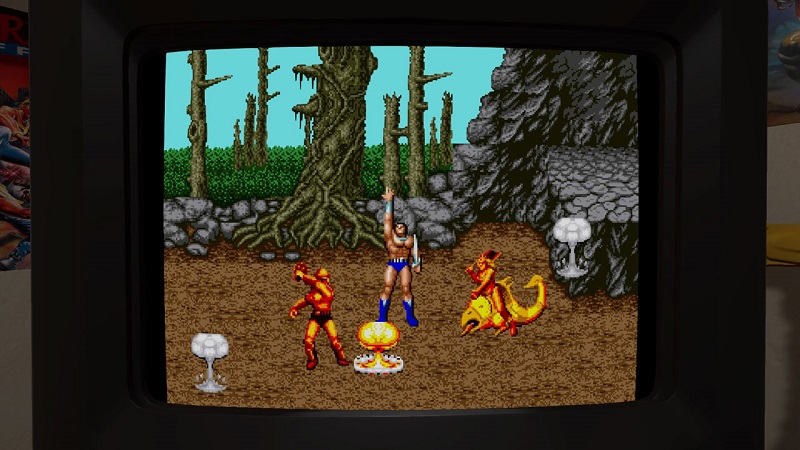
There are some core genres that are heavily featured within SEGA Mega Drive Classics’ collection of over 50 games from the legendary franchises to lesser known hidden gems including beat ’em ups such as Alien Storm (interlaced with first-person shooter elements), Altered Beast, Comix Zone, Golden Axe I, II and III, Shadow Dancer (Shinobi series), Shinobi III: Return of the Ninja Master, Streets of Rage I, II and III and The Revenge of Shinobi; fighting games such as Virtua Fighter 2; match 3 or 4 puzzlers including Columns, Columns III and Dr. Robotnik’s Mean Bean Machine; pinball with Sonic Spinball; platformers such as Alex Kidd In the Enchanted Castle, Bonanza Bros, Decap Attack, Dynamite Headdy, ESWAT: City Under Siege, Flicky, Kid Chameleon, Ristar, Sonic the Hedgehog, Sonic the Hedgehog 2, Sonic 3D Blast, ToeJam and Earl, ToeJam and Earl In Panic On Funkotron, Vectorman 1 and 2, Wonder Boy III: Monster Lair and Wonder Boy In Monster World; RPGs including Beyond Oasis (also known as The Story of Thor), Fatal Labyrinth, Landstalker, Light Crusader, Phantasy Star II, Phantasy Star III: Generations of Doom, Phantasy Star IV: The End of the Millennium, Shining Force, Shining Force II, Shining In the Darkness and Sword of Vermilion; side-scrolling or top-down run and gun games such as Alien Soldier, Crack Down, Gain Ground and Gunstar Heroes; and side-scrolling or third-person space shooters including Bio-Hazard Battle, Galaxy Force II, Space Harrier II and Super Thunder Blade.
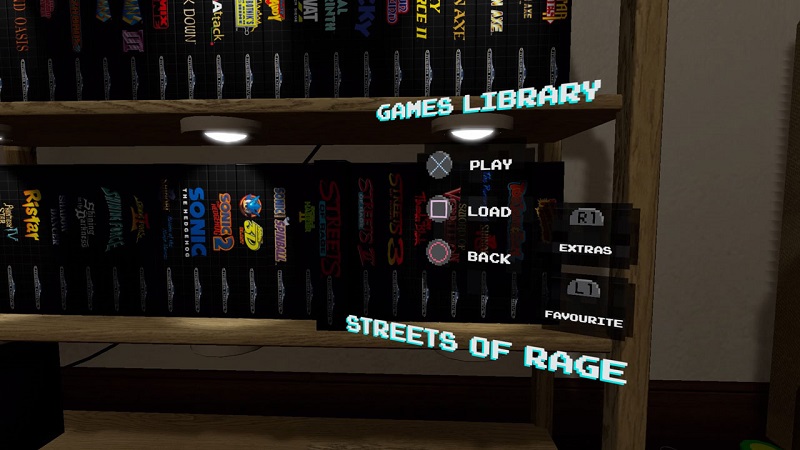
As excellent as the collection is; there are a few games that are missing such as the much requested Sonic the Hedgehog 3 and Sonic and Knuckles are not included in the collection, despite being included in earlier compilations, while Eternal Champions and Ecco the Dolphin games that were featured on previous compilations are not included either. Meanwhile, there are no SEGA developed sports games most probably due to licensing issues such as NBA Action, Super Monaco GP 1 and 2, Virtua Racing, World Championship Soccer and Wrestle War in addition to no games that were published by SEGA Sports such as ATP Tour Championship Tennis, College Football National Championship I and II, Joe Montana Football, NFL Prime Time ’98, NHL All-Star Hockey ’95, Pebble Beach Golf Links, Wimbledon Championship Tennis and World Series Baseball.

Challenges drop the player into a certain area or scenario within 20 SEGA Mega Drive games were the player must achieve a specific objective such as getting a score of at least 4,000 points after starting in the middle of a game in Dr. Robotnik’s Mean Bean Machine; beating the two Minotaurs without using a continue in Golden Axe III; completing Green Hill Zone Act 2 in mirror mode in under one minute in Sonic the Hedgehog; completing stage 1 without losing a life in Space Harrier II; completing stage 2 without picking up any items in Streets of Rage II; and much more besides.
SEGA Mega Drive Classics will not be ported to Vita, but anyone looking to play SEGA Mega Drive games portably could do so on the PSP with SEGA Mega Drive Collection that was released in November 2006 in America and February 2007 in Europe and other regions. SEGA Mega Drive Classics’ remote play performance is excellent as the graphics, audio and general performance maintains the quality of the PS4 version. Remote play control scheme optimisation includes exiting a game being remapped to holding the bottom right of the touch screen, while fast forwarding and rewinding gameplay is mapped to holding the top right and left of the touch screen respectively; therefore resulting in a comfortable retro themed remote play experience.
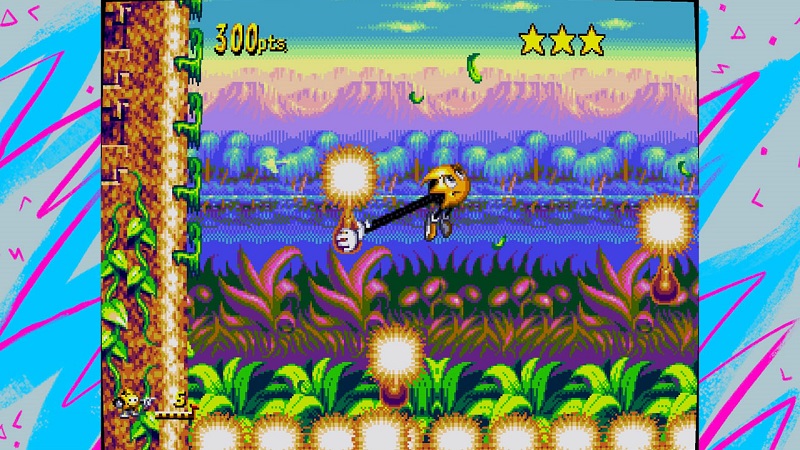
The controls are appropriately mapped to the DualShock 4 controller with the default control scheme consisting of square, X, O, R1, triangle and L1 representing the A, B, C, X, Y and Z buttons from the SEGA Mega Drive’s controller, while pressing the options button represents start to select certain menu items or pausing gameplay, alongside holding R2 or L2 to fast forward text or rewind gameplay respectively; moving the right analogue stick upwards to quick load or downwards to quick save; changing the direction of the left analogue stick or alternatively pressing up, down, left or right on the d-pad to move your character; and pressing the share button takes you to the share feature menu. Holding the touch pad to exit out of a game, while there is no light bar support that could have perhaps provided an alternative HUD for your character’s health in each game, alongside no vibration that could perhaps have been implemented for such occasions as Sonic colliding with an enemy or obstacle that would cause him to lose all of his rings or being hit by enemies in Altered Beast, Golden Axe, Streets of Rage and so on. There is an alternative control layout that essentially remaps A, B, C and X to X, O, R1 and square respectively, while mirror mode reverses the controls.
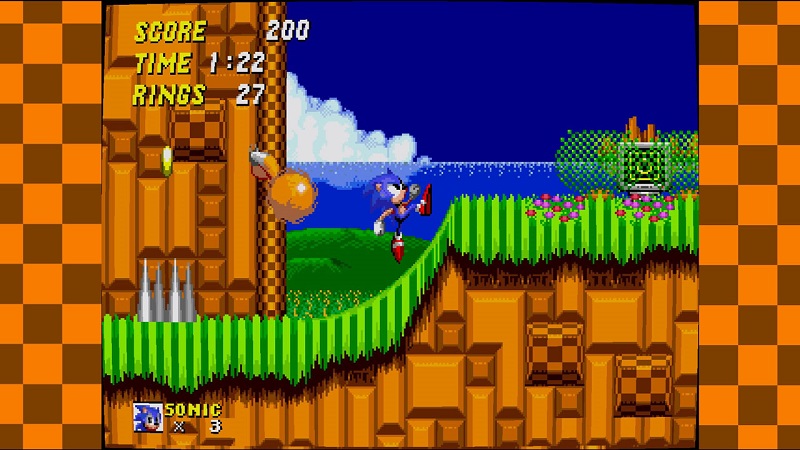
Graphically, SEGA Mega Drive Classics’ quality of emulation is superb as players can enjoy pixel perfect emulations or alternatively enhance the emulation via console settings including no filtering with the exact SEGA Mega Drive output, a bilinear blurring together of pixels, EPX that dynamically creates 4x more pixels based on the original artwork, HQ4X to smooth diagonal lines and curves in order to anti-aliase the output and XBR delivers a more complex version of HQ4X. Further graphical settings include CRT scanlines, a stretched fullscreen without borders or a CRT screen with borders based on games such as Sonic and Streets of Rage, disabling sprite limit to override console rendering limitations and horizontally flipping the screen to reverse gameplay and text on screen in mirror mode.
PS4 received a post-launch update that has provided PlayStation VR support in the form of full compatibility from the opening video to the menus and every game in full screen or seeing the TV screen from a few feet away situated in the room the game is being played within, while simultaneously increasing reaction times in some games such as the first-person gameplay in Alien Storm and seemingly giving the impression of more depth during isometric games such as Sonic 3D Blast, Beyond Oasis and more besides. Therefore, if you have PlayStation VR; you will definitely want to play SEGA Mega Drive Classics in virtual reality, just make sure to turn the headset on before putting the game on in order to play in VR instead of the non-VR version.
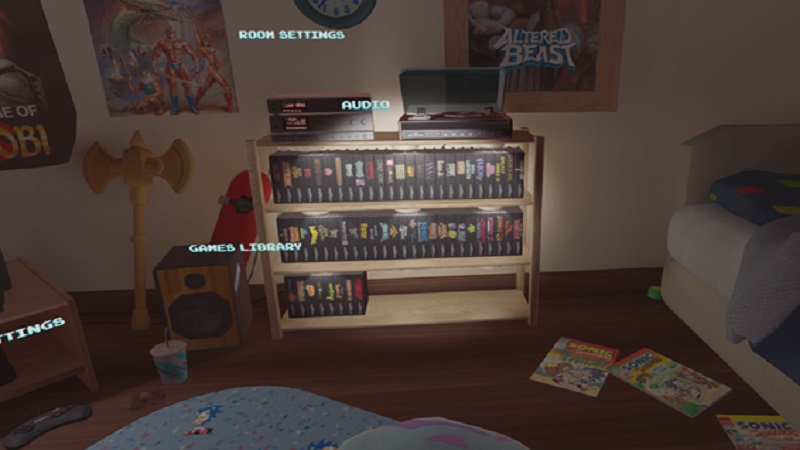
The presentation of the game is solid with a great user interface across various menus such as the main menu, games library menus, local and online multiplayer menus, extras menus, settings menus and gameplay menus with support for navigation via the left analogue stick, directional pad and face buttons, while the touch pad is used to exit out of a game, although it does not include support for navigation via the right analogue stick. Background menus are presented in a quite simply brilliant manner that provides fan service in itself by appreciating the passion of SEGA’s fans as the main menus are presented as though they were situated in a massive SEGA fans’ bedroom with every SEGA Mega Drive game displayed alphabetically from the side of each original case in which the cartridge is entered into the SEGA Mega Drive upon selecting a game, while posters of Altered Beast, Comix Zone, Golden Axe, Sonic, Streets of Rage and The Revenge of Shinobi adorn the walls, alongside a Sonic carpet and a SEGA clock. PlayStation VR’s presentation is even better as the player can look a complete 360 degrees around the room to see an acoustic guitar, artwork and more besides that was previously impossible in the non-VR version, while menu navigation has been reworked resulting in menus being chosen via the gyroscopic motion sensing functionality of the headset in harmony with the PlayStation Camera to light up an area of the room that the player is focused on before pressing X to bring the menu towards you in a method that is much more refined for virtual reality.
SEGA Mega Drive Classics’ audio is pretty much a replication of the original voice-overs, sound effects and music from every game contained within the collection; therefore fulfilling its desired approach. There is no DualShock 4 speaker implementation that could have highlighted specific voice-overs, sound effects or music.
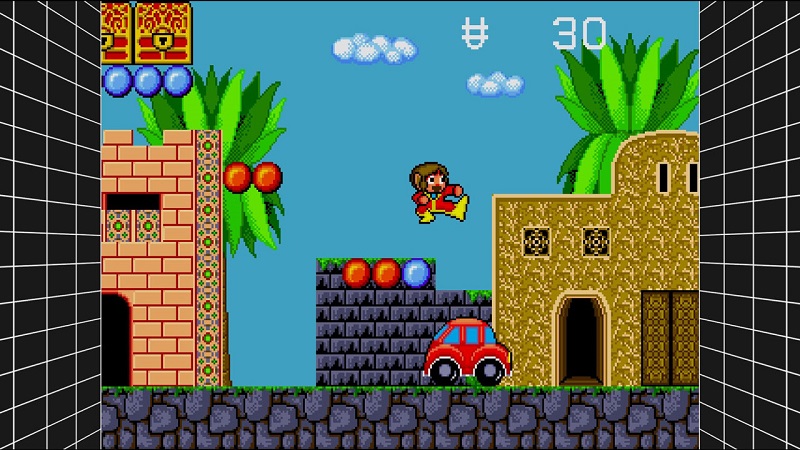
The trophy list includes 26 trophies with 12 bronze trophies, 6 silver trophies, 7 gold trophies and 1 platinum trophy. Easier trophies include the Five Large bronze trophy for gaining a high score of at least 5,000 points on easy in Columns and the What Are the Buttons? bronze trophy for using magic when no enemies are present in Golden Axe. Harder trophies include the Clean Sweep gold trophy for completing all challenges and the Power Through bronze trophy for reaching a score of 5 million points in Space Harrier II. It is estimated that depending upon skill and a good trophy guide to provide some helpful tips that it would take between 30 to 50 hours to platinum the trophy list.
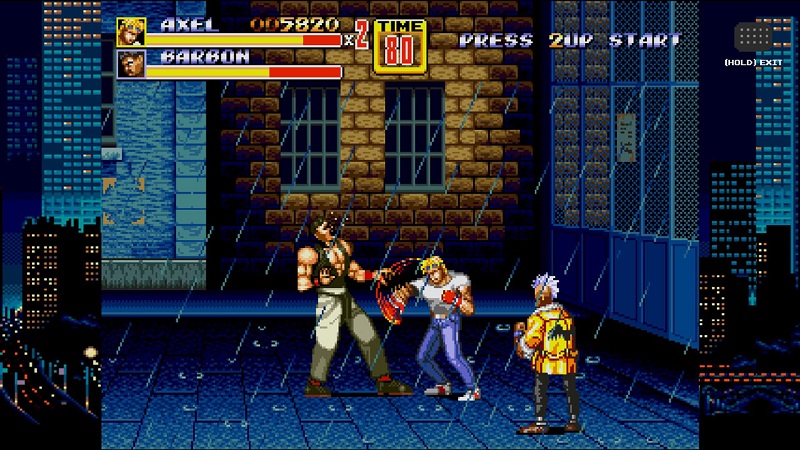
16-bit era games are notoriously hard, although finely balanced in difficulty due to the always appropriately implemented quantity of continues and gameplay elements such as the amount of shurikins the player can throw at enemies in Shinobi III: Return of the Ninja Master and The Revenge of Shinobi; accompanied by a range of difficulty levels from easiest on Columns to hardest difficulty on Streets of Rage and The Revenge of Shinobi. However, as in most games of the 16-bit era; once your character had been defeated or your puzzle screen had been filled, it was time to restart the entire level from the very beginning. For instance, if your character in ESWAT: City Under Siege received a few shots from enemies, then it would send your character back to the start of the level with one less life until it happened enough for the player to have to use a continue followed by a game over screen when the player had used all of their continues. Therefore, the flow of gameplay rather intriguingly creates a massively different pattern of play in comparison to more modern games; as the player has to learn and remember enemy movement patterns such as when they arrive on-screen and the enemy to defeat first that would prevent your character from being open to taking damage from another character.
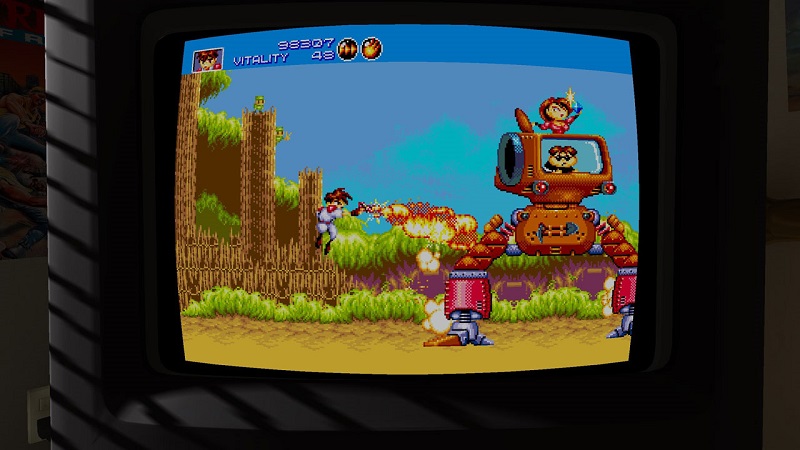
Local multiplayer allows two players to play co-operatively in Alien Storm, Bio-Hazard Battle, Bonanza Bros, Crack Down, Gain Ground, Golden Axe II and III, Gunstar Heroes, Streets of Rage I, II and III, ToeJam and Earl, ToeJam and Earl In Panic On Funkotron and Wonder Boy III: Monster Lair, while some games actually have a competitive multiplayer component such as Alien Storm, Columns, Columns III, Dr. Robotnik’s Mean Bean Machine, Golden Axe II and III, Sonic the Hedgehog 2, Sonic Spinball, Streets of Rage II and III and Virtua Fighter 2.
Online multiplayer matchmaking supports two players including the ability to filter matchmaking through removing certain games that you do not want to play in online multiplayer, while inviting a friend to play Alien Storm, Altered Beast, Bio-Hazard Battle, Bonanza Bros, Columns, Columns III, Crack Down, Dr. Robotnik’s Mean Bean Machine, Gain Ground, Golden Axe I, II and III, Gunstar Heroes, Sonic the Hedgehog 2, Streets of Rage I, II and III, ToeJam and Earl, ToeJam and Earl In Panic On Funkotron, Virtua Fighter 2 and Wonder Boy III: Monster Lair.
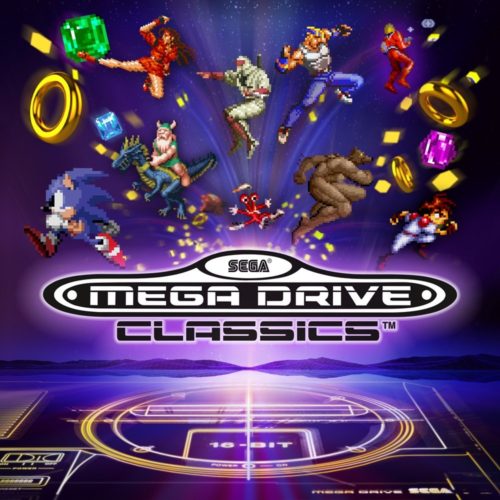
Online leaderboards focus on certain elements of 20 particular games such as the high score in easy mode for Columns, a high score in Gunstar Heroes, Kid Chameleon, Sonic Spinball and Streets of Rage, the quantity of rings collected in Sonic the Hedgehog 2 and more besides with each leaderboard containing each player’s rank; name (PSN ID); and their total high score, while players can compare their positioning on the leaderboards with global players, friends and immediately finding your position within any given leaderboard.
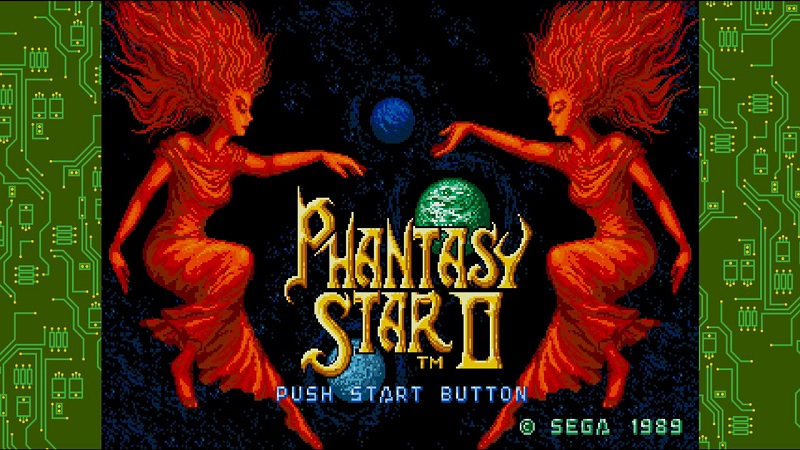
SEGA Mega Drive Classics’ replayability stems from over 50 amazing retro games featuring enhanced emulation options or original emulation and mirror mode to flip the screen horizontally, 20 challenges, local multiplayer and online multiplayer involving mostly co-operative with some competitive components in a little under half the collection and online leaderboards for 20 games; complimented by full PlayStation VR compatibility throughout every facet of gameplay. Unlike previous SEGA Mega Drive collections; there are no unlockable games, concept artwork or behind-the-scenes documentaries. However, mod support is not included in the home console versions, despite having full Steam Workshop compatibility on PC. If only that functionality could be brought over to home consoles, then PlayStation and Xbox gamers would be able to experience creative mods such as Knuckles being the lead character in the first Sonic the Hedgehog or replacing the version within the collection with a better Japanese 60Hz port instead of the European 50Hz release.
Analysis
- Title: SEGA Mega Drive Classics
- Developer: SEGA/d3t
- Publisher: SEGA
- System: PS4/PlayStation VR
- Format: Blu-Ray Disc/PSN Download
- Cross-Buy: No
- Cross-Play: No
- Players: 1-2 (Local Multiplayer)/2 (Online Multiplayer)/Online Leaderboards
- Hard Drive Space Required: 2.91GB (Version 1.01)












